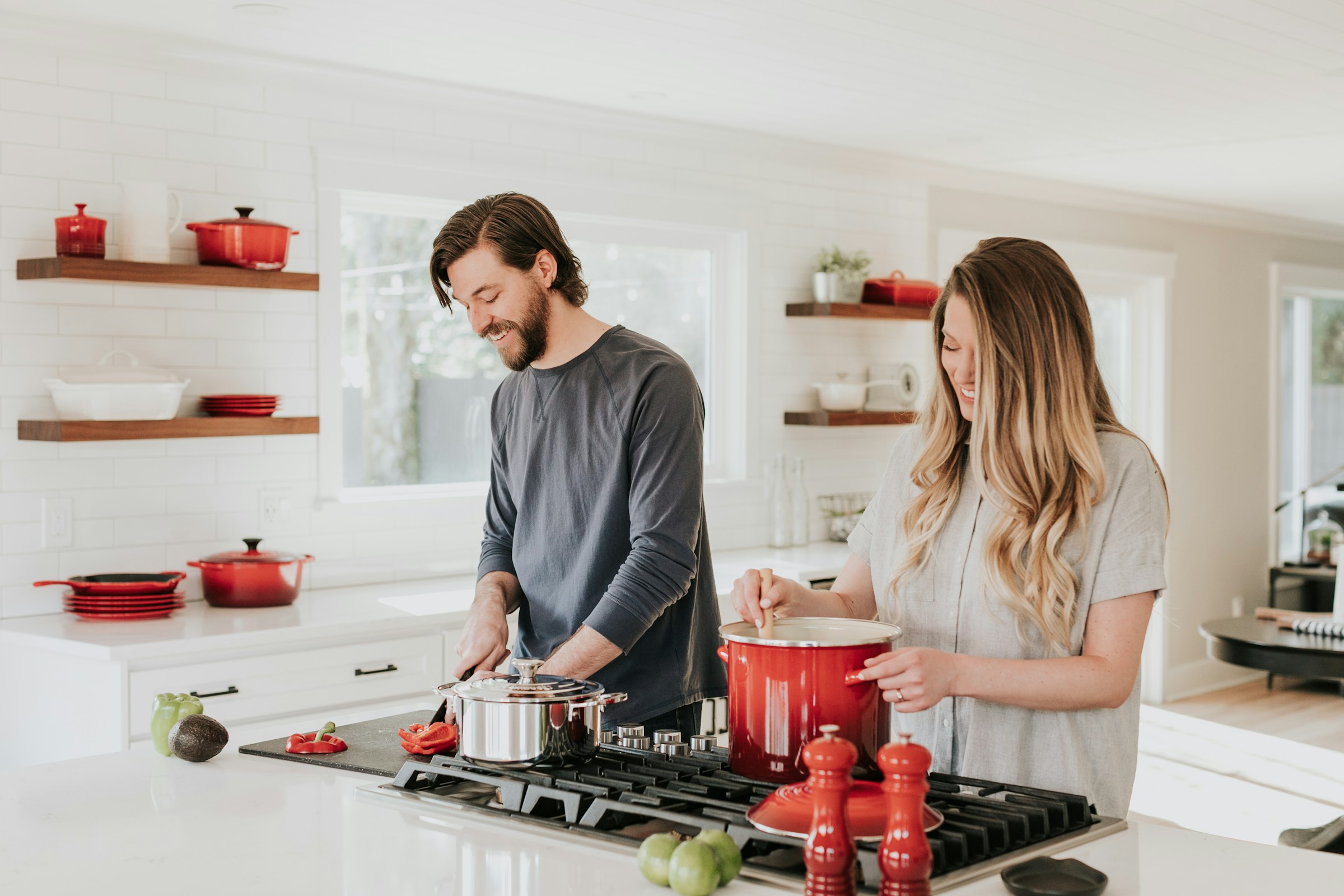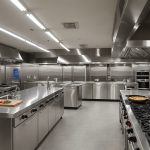Creating a warm and inviting kitchen goes beyond just décor; lighting plays a pivotal role in setting the right atmosphere. The right fixtures can enhance functionality while adding charm to your culinary haven. From ambient lighting to accent options, you’ll discover ways to transform your kitchen space into a cozy retreat. Explore these top lighting solutions that not only brighten your workspace but also reflect your unique style, ensuring your kitchen becomes the heart of your home.
Effective Lighting Solutions for Cozy Kitchens
Creating a welcoming and functional kitchen involves more than just selecting the right appliances. Lighting solutions play a crucial role in transforming your kitchen into a cozy and inviting space. Understanding the different types of lighting is essential for achieving the perfect ambiance.
This might interest you : Maximizing Space: Creative Ways to Add a Wine Cooler in Your Cozy Kitchen
Kitchen lighting ideas often focus on three main types: ambient, task, and accent lighting. Ambient lighting provides the overall illumination necessary for daily activities. It’s typically achieved through ceiling fixtures or recessed lights. Task lighting, on the other hand, focuses on areas where specific tasks are performed, like under-cabinet lights for food preparation. Accent lighting adds depth and highlights architectural features or decor elements, enhancing the room’s character.
Layering light is vital in achieving both warmth and functionality. By combining different lighting types, you can adjust the brightness and mood to suit various occasions. For instance, dimmable ambient lights can create a soft, relaxing environment for dining, while brighter task lights ensure safety and efficiency during cooking.
Also read : Maximizing Space: Creative Ways to Add a Wine Cooler in Your Cozy Kitchen
The benefits of the right lighting extend beyond aesthetics. A well-lit kitchen not only looks inviting but also improves functionality and safety. Thoughtfully designed lighting solutions can turn your kitchen into a cozy haven, making it a pleasure to cook, dine, and entertain in.
Types of Lighting Fixtures
Selecting the right lighting fixtures can significantly enhance your kitchen’s ambiance and functionality. Each fixture type offers unique benefits and is suited for specific placements.
Pendant Lights
Pendant lights are a popular choice for kitchens, providing both style and function. These hanging fixtures are perfect for illuminating islands or dining areas, offering focused light while adding a decorative touch. Their versatility allows for various designs, from sleek modern to rustic charm, making it easy to match your kitchen’s aesthetic. When choosing pendant lights, consider the height and size to ensure they complement the space without overwhelming it.
Under-Cabinet Lighting
Under-cabinet lighting is essential for task-focused areas. It provides direct illumination for countertops, enhancing visibility during food preparation. This type of lighting is discreet yet effective, often using LED strips or puck lights for a seamless look. The installation is straightforward, and many options offer dimmable features, allowing you to adjust the brightness as needed.
Recessed Lighting
Recessed lighting offers a clean, unobtrusive solution for ambient illumination. Installed into the ceiling, these fixtures provide even light distribution without cluttering the space. Ideal for general lighting, recessed lights can be strategically placed to cover the entire kitchen area. Opt for adjustable versions to direct light where it’s most needed, enhancing both functionality and style.
Design Styles for Kitchen Lighting
Choosing the right design style for your kitchen lighting can significantly enhance the overall aesthetic and functionality of the space. Two popular styles often considered are modern kitchen lighting and farmhouse style. Each offers distinct characteristics that can complement your kitchen decor beautifully.
Modern kitchen lighting is characterized by sleek lines, minimalistic design, and the use of materials like metal and glass. This style often incorporates innovative technology, such as smart lighting systems, to offer convenience and efficiency. To achieve this look, consider fixtures like linear pendants or geometric chandeliers, which add a contemporary touch without overwhelming the space.
On the other hand, the farmhouse style embraces a more rustic and cozy ambiance. It often features fixtures made from natural materials like wood and wrought iron. Look for lighting options such as lantern-style pendants or vintage-inspired sconces to bring warmth and character to your kitchen.
When choosing fixtures, ensure they align with your kitchen’s overall theme. For a cohesive look, consider the finishes and colours of your existing decor. Examples of successful implementations include combining modern pendant lights with a sleek kitchen island, or using farmhouse-style chandeliers to enhance a rustic dining area.
Choosing the Right Colour Temperature
Understanding colour temperature is essential for creating the ideal kitchen ambiance. Measured in Kelvin (K), colour temperature determines the hue of the light. Lower values, like 2700K to 3000K, produce warm lighting that emits a soft, yellowish glow, perfect for cozy settings. This warm lighting is inviting and enhances the comfort of your kitchen, making it an ideal choice for dining areas or spaces where you want to relax.
In contrast, higher colour temperatures, such as 4000K to 5000K, offer a cooler, bluish-white light. While these are great for task-oriented areas needing bright illumination, they can sometimes feel stark or clinical if overused. Therefore, balancing different temperatures is crucial in maintaining a welcoming atmosphere.
Visual examples can help illustrate the impact of colour temperature on your kitchen’s look and feel. Imagine a kitchen with warm lighting highlighting wooden cabinetry and creating a homely vibe. Conversely, a cooler light might highlight a modern, minimalist design with sleek surfaces.
To achieve the best results, consider using adjustable lighting fixtures that allow you to change the colour temperature according to the time of day or activity. This flexibility ensures your kitchen remains both functional and inviting.
Installation Tips for Kitchen Lighting
Installing kitchen lighting can transform your space, but it’s essential to approach the task with care. Whether you’re tackling a lighting installation yourself or hiring a professional, understanding the process is crucial.
Step-by-Step Guide
- Plan Your Layout: Decide where each fixture will be placed, considering the balance of ambient, task, and accent lighting.
- Gather Tools: Essential tools include a drill, screwdriver, wire stripper, and voltage tester.
- Turn Off Power: Always switch off the power at the circuit breaker before starting any electrical work.
- Install Fixtures: Follow the manufacturer’s instructions carefully. For pendant lights, ensure they hang at the correct height.
- Connect Wiring: Match the wires from the fixture to those in the junction box, usually by colour.
Safety Considerations
- Check Voltage: Use a voltage tester to ensure no electricity is flowing before handling wires.
- Secure Fixtures: Ensure all fixtures are tightly secured to prevent accidents.
When to Seek Professional Assistance
If you’re uncomfortable with electrical work or dealing with complex systems, it’s wise to consult a professional. They can ensure the installation is safe and compliant with local regulations. For intricate designs or high ceilings, professional expertise can be invaluable.
Enhancing Functionality with Lighting
In the heart of your home, functional lighting plays a pivotal role in enhancing both efficiency and safety. Task lighting is crucial in areas where precision is key, such as countertops and cooking zones. This type of lighting ensures you have ample illumination for detailed tasks, reducing the risk of accidents and improving overall workflow.
Kitchen Areas Needing Specific Lighting
Certain zones within the kitchen benefit significantly from targeted task lighting. Under-cabinet lighting is an excellent example, providing direct light onto work surfaces where chopping, mixing, and other culinary activities occur. Similarly, stove areas can be enhanced with overhead lights, ensuring clear visibility while cooking.
Examples of Task Lighting Integration
Integrating task lighting effectively involves considering both placement and type. LED strip lights under cabinets offer a sleek solution, delivering bright, even illumination without taking up space. Pendant lights above islands not only serve as a stylish focal point but also provide focused light for meal preparation or casual dining.
For those seeking a more tailored approach, adjustable spotlights allow you to direct light precisely where needed, accommodating various tasks and preferences. By prioritising functional lighting, you can create a kitchen environment that is both practical and inviting, seamlessly blending style with utility.
Visual Inspiration and Product Recommendations
When designing your kitchen, selecting the right kitchen lighting products is crucial to achieving both style and functionality. A curated list of top-rated options can guide you in making informed choices. Consider pendant lights with adjustable heights for versatility, or LED strips for under-cabinet illumination. Each product offers unique benefits tailored to specific kitchen needs.
Inspirational Setups
Explore visual inspiration to see how lighting can transform your kitchen space. Imagine a modern kitchen with sleek pendant lights hanging over a marble island, casting a warm glow that highlights the room’s elegance. Alternatively, picture a rustic setup with vintage-inspired sconces adding a cozy touch to wooden cabinetry. Such examples can spark ideas for your own design.
Product Purchase Tips
Purchasing the right lighting products involves more than just aesthetics. Consider visiting local showrooms where you can see fixtures in person and consult with experts. Online retailers also offer a wide range of options, often with customer reviews to guide your decision. Look for sales or discounts to make your purchase more budget-friendly. By combining visual inspiration with product recommendations, you can create a kitchen lighting setup that is both beautiful and functional.






